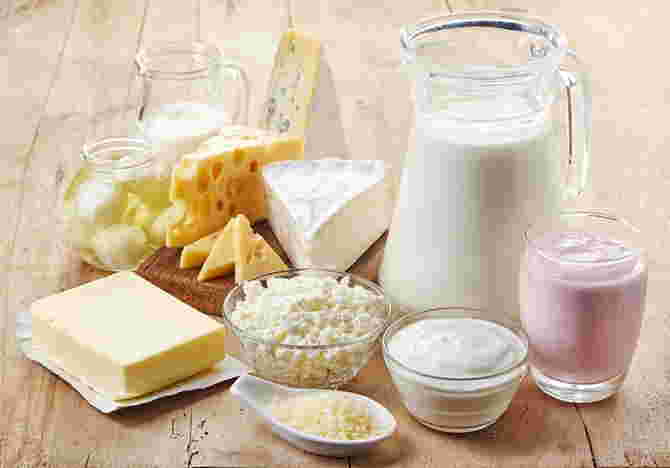Every mum has been through the pain of seeing their child suffer from a series of tummy problems. No matter how many children you have, it puzzles you each time a tummy problem happens because the symptoms and causes vary from one child to another. If your child aged 1 year old and above is known to have a sensitive tummy, what do you have to do about their diet and what can you do to help your child ease their tummy troubles?
First, let’s see if your child has any of these symptoms.
Common Sensitive Tummy Symptoms
- Diarrhea
- Cramping
- Bloating
- Intestinal Gas
- Nausea
- Vomiting
- Constipation
- Heartburn
Younger children may not be able to tell you verbally if they’re experiencing some kind of tummy trouble, in fact, they may not even understand the pain they are enduring. So pay attention if they’re unusually fussy or grumpy, having trouble sleeping, squirming and constantly touching their stomachs (due to tensed up muscles) or making faces that show pain.
If you’ve ticked off one or more of the symptoms above, let’s find out what could actually be triggering your child’s sensitive tummy.
Common Causes of Tummy Pain
Tummy pain is very common in children and adults and the causes can be just about anything, really. Here are some of the most common causes:
- Wind and indigestion
- Infections: food poisoning, gastroenteritis, pneumonia or urinary tract infection
- Food intolerances and/or allergies
- Constipation
- Appendicitis
Among the causes above, indigestion, food intolerance and constipation are usually the reasons behind tummy troubles in children. Oftentimes, parents would pinpoint their children’s diet before anything else. For the little ones, the first thing that comes to mind is the milk that they drink.

Credit: iStock
If your child often gets an upset stomach after consuming a glass of milk, milkshake or an ice cream, you might wonder if lactose sensitivity is the issue here. According to this article by Kadakkal Radhakrishnan, MD, Paediatric Gastroenterologist at Cleveland Clinic, Ohio, here are the symptoms of lactose sensitivity:
- Loose stools and gas after consuming dairy products
- Watery diarrhea with gas
- Stomach bloating, gas and nausea
- Skin rash and frequent colds
- Generalized abdominal pain and cramping
Note:
Milk allergy is often confused with lactose sensitivity. They may share the same symptoms but their conditions are different.
Milk allergy – a serious immune system reaction to milk and products containing milk¹.
Lactose sensitivity – a digestive issue where the body is unable to digest lactose, a type of sugar commonly found in milk and dairy products².
Lactose – Yay OR Nay For Sensitive Tummies?
Dairy plays an important role in children’s daily diet. Milk and other dairy products such as cheeses and yoghurt contain nutrients that are essential for their growth, and this includes lactose.
What are the benefits of lactose?
- Lactose gives us energy. When digested, it is broken into simpler sugars, galactose and glucose – the body’s energy generators³.
- Lactose enhances the absorption of calcium and magnesium – nutrients for strong bones and teeth³⁻⁵.
- Lactose enhances immunity and promotes better growth of beneficial bacteria in the digestive system due its prebiotic properties³′⁵.
Before you make drastic changes to your child’s diet, do note that every tummy is different. Children who tolerate lactose well naturally digest the lactose they consume with the aid of the lactase enzymes. Lactase breaks lactose into simpler components for our body to absorb and use³.
Those with lactose sensitivity have insufficient lactase enzymes, so the lactose remains in the digestive system, where it is fermented by bacteria. Not everyone with lactose sensitivity will experience symptoms such as gassiness, bloating, watery stools and cramps, as it all depends on the amount of lactose the body can tolerate³.
The Milk Formulated For Sensitive Tummies
Whether your child is severely or just slightly sensitive to lactose, it is vital that you start gradually making changes to their diet according to their unique individual needs. Rule out food and drinks that trigger their sensitive tummies and stick to the ones that they can still tolerate well.
However, if you still wish for your growing up child to enjoy the nutritional benefits of milk and other dairy products, here’s what you can do:
- Switch to growing up milk that is lower in lactose
Your child may still be able to tolerate a certain amount of lactose, depending on their tolerance level⁵. Lactose should be taken in small amounts at a time. Follow the recommended amount of up to 24g of lactose/day⁶.
- Choose milk that is formulated with Partially Hydrolysed Protein (PHP)
PHP is a regular protein that is hydrolysed into amino acids and peptides and is absorbed well by sensitive tummies⁷. To put it simply, it is a regular protein that is broken down into smaller sizes, making it easier to digest and absorb. The nutrient value between regular protein and partially hydrolysed protein is the same.

PHP is good for intestinal health and supports the immune system too. It is great for kids with sensitive tummies as they can still fulfil their protein needs and maintain good health with a stronger immune system.⁸
Try Enfagrow A+ MindPro Gentlease (1-3 years)


♦ FAO/WHO recommends daily dietary DHA intake of 10-12mg/kg body weight for children 12-24 months or 100-150mg DHA+EPA for children 2-4 years old
▲ Compared to previous formulation. Enfagrow A+ provides 105mg DHA in 3 servings a day
˄ Manninen AH, Protein hydrolysates in sports nutrition, Nutrition & Metabolism 2009 ; 6(1):38.
▪ Compared to Enfagrow A+ Formulation.
* Sugar refers to sucrose based on Regulation 118 under Malaysia Food Regulation 1985
Scientifically designed for sensitive tummies
Enfagrow A+ MindPro Gentlease (1-3 years) is designed for children with delicate tummies and provides balanced nutrition for your little one’s happy growth. It contains partially hydrolyzed protein that helps children with sensitive tummies to have better digestion and absorption of key nutrients.
It is also now added with MFGM that supports brain development9 and enhanced with 105mg DHA in 3 servings per day to help meet expert-recommended daily DHA intake*, so you can be sure that your child’s daily DHA needs are always on track.

Credit: iStock
Your child needs optimum nutrition to experience well-rounded growth and development. Give your child’s sensitive tummy growing-up milk specially formulated with Partially Hydrolysed Protein that is easy to digest and with lower levels of lactose**. Say goodbye to upset tummies and hello to more smiles and happier milk time with Enfagrow A+ MindPro Gentlease. Try it today!
*FAO/WHO recommended daily DHA intake of 10-12mg/kg body weight for children 12-24 months or 100-150mg DHA+EPA for children 2 years old and above. FAO 2010. Fats and fatty acids in human nutrition. Report of an expert consultation. FAO Food and Nutrition Paper no.91. FAO: Rome.
**Compared to Enfagrow A+ formulation
References:
- https://www.mayoclinic.org/diseases-conditions/milk-allergy/symptoms-causes/syc-20375101
- https://www.nhs.uk/conditions/lactose-intolerance/#:~:text=Lactose%20intolerance%20is%20a%20common,in%20milk%20and%20dairy%20products.
- Schaafsma G. Lactose and lactose derivatives as bioactive ingredients in human nutrition. International Dairy Journal. 2008;18(5):458-65.
- Zamberlin Š, Antunac N, Havranek J, Samaržija D. Mineral elements in milk and dairy products. Mljekarstvo/Dairy. 2012;62(2).
- Lukito W, Malik SG, Surono IS, Wahlqvist ML. From ‘lactose intolerance ‘to’ lactose nutrition’. Asia Pacific Journal of Clinical Nutrition. 2015;24:S1.
- Wahlqvist ML. Lactose nutrition in lactase nonpersisters. Asia Pacific Journal of Clinical Nutrition. 2015;24(S1):s21-5
- Manninen AH, Protein hydrolysates in sports nutrition, Nutrition & Metabolism 2009 ; 6(1):38
- https://www.enfagrow.com.my/articles/ease-protein-digestion-issue-partially-hydrolyzed-protein
- www.ncbi.nlm.nih.gov/pmc/articles/PMC6189118/
Disclaimer: You are not allowed to share this article on any other website or on Facebook without providing proper credit and the original article link on theAsianparent Malaysia website.
Read more: A Gut Expert’s Guide To Bloat & Digestion